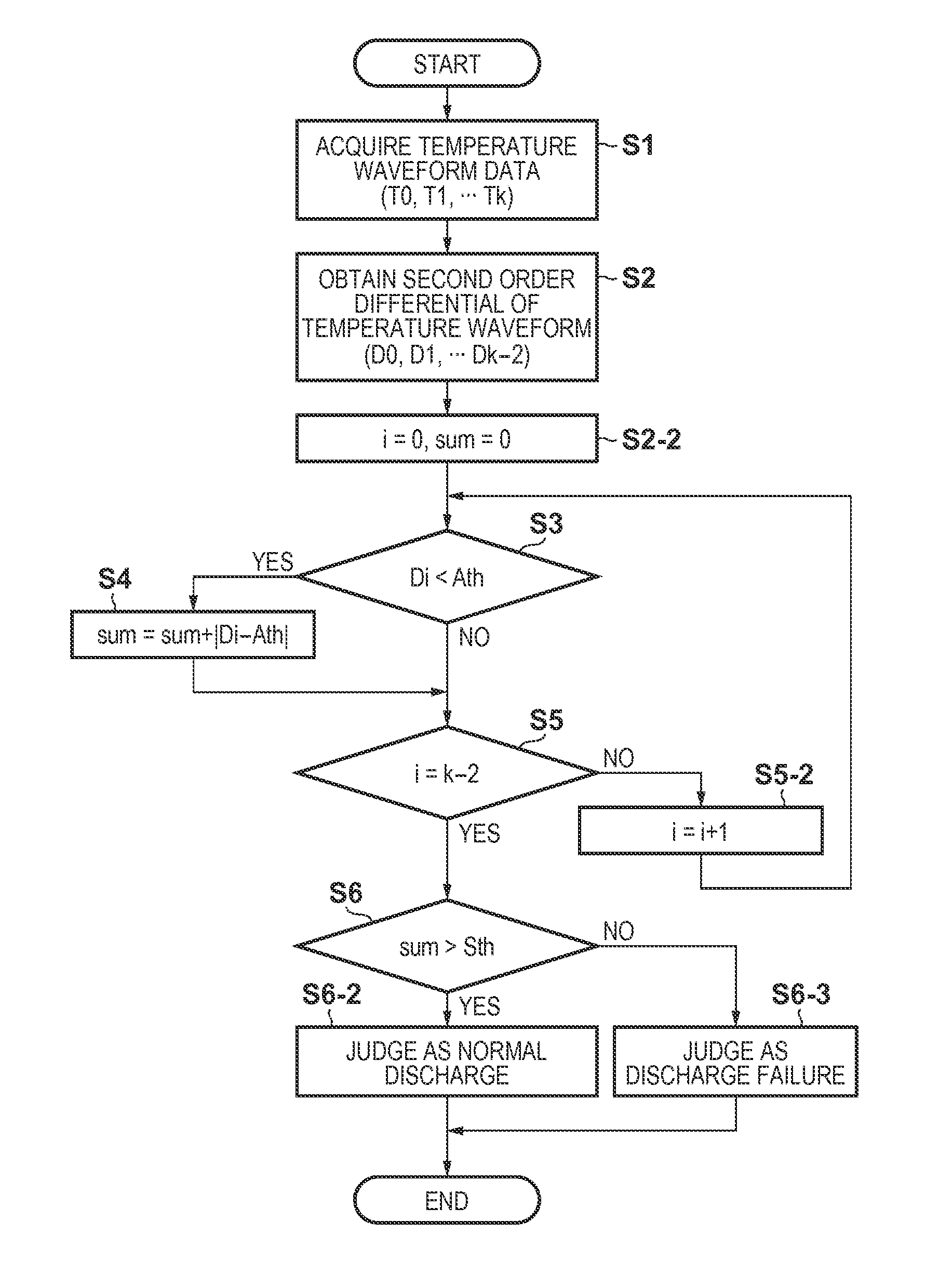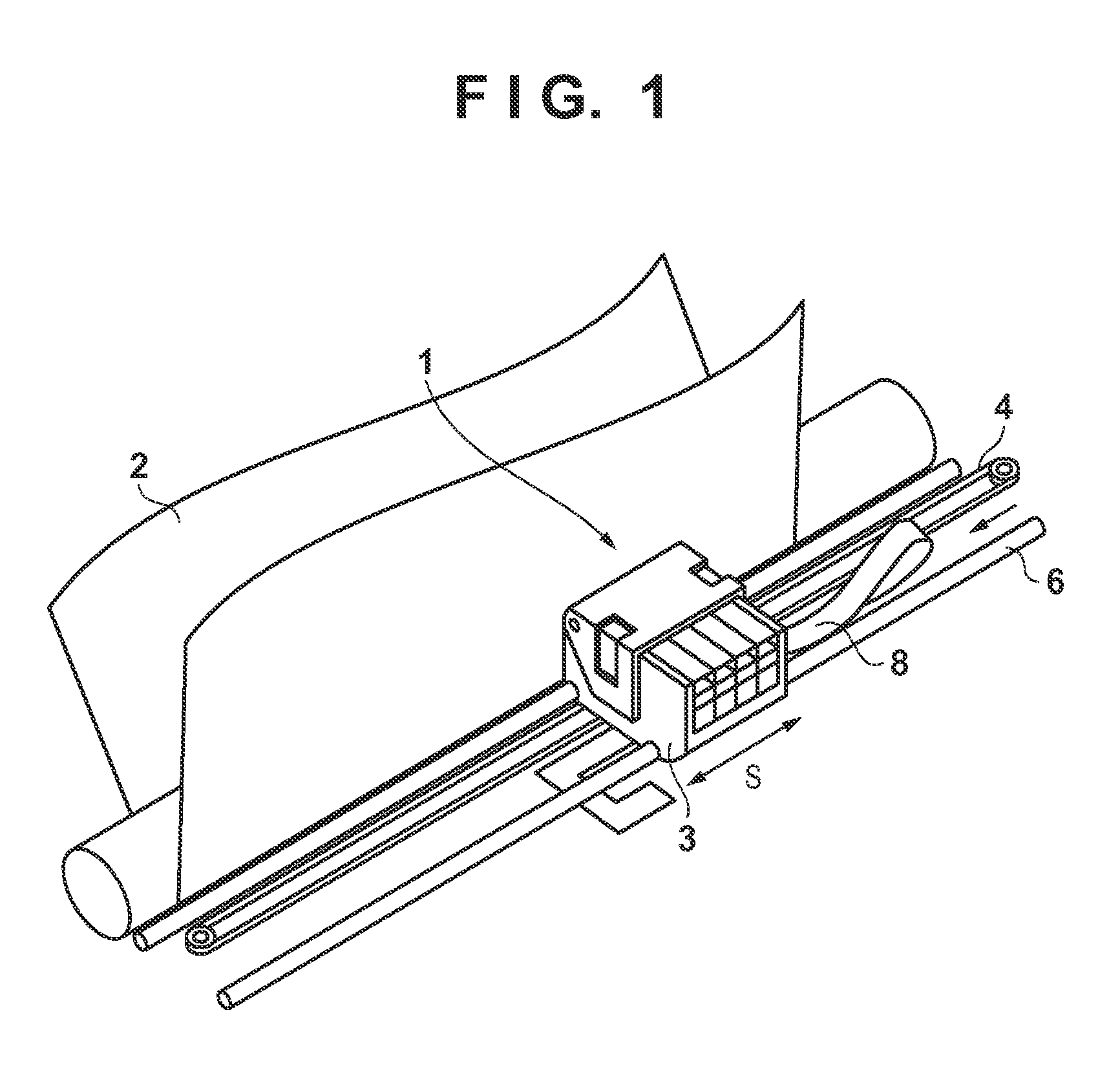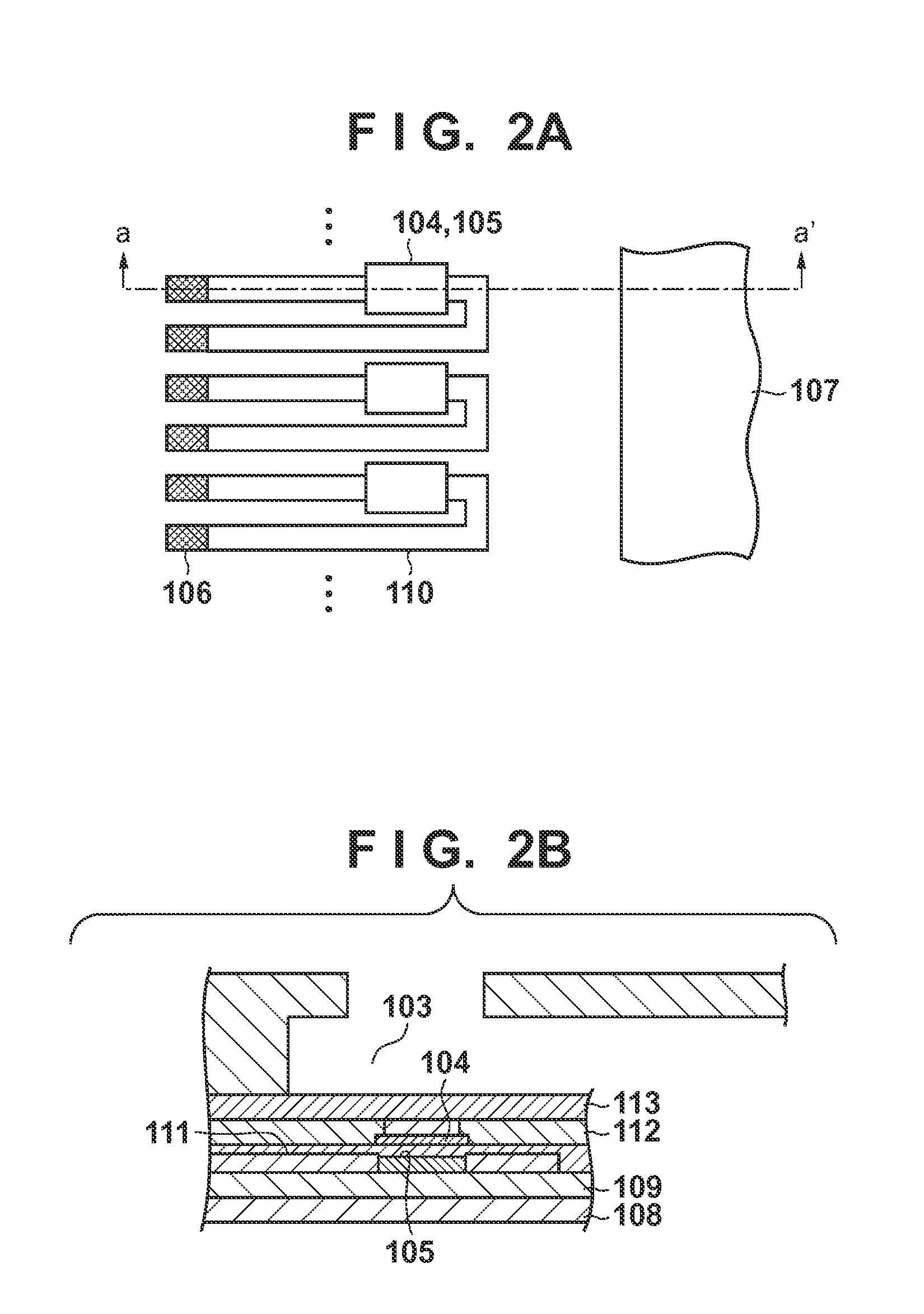Printing apparatus
a printing apparatus and printing technology, applied in printing, other printing apparatus, etc., can solve the problems of difficult rapid judgment of the discharge state, large printing apparatus, and inability to quickly judge the discharge sta
- Summary
- Abstract
- Description
- Claims
- Application Information
AI Technical Summary
Benefits of technology
Problems solved by technology
Method used
Image
Examples
first embodiment
[0072]FIG. 7 is a graph showing the relationship between an addition threshold and the second derivatives (d2T / dt2) of the temperature detected by a temperature sensor 105 in respect with a time at the time of normal discharge and at the time of a discharge failure occurrence according to the first method. In FIG. 7, T is a temperature, and t is a time.
[0073]In the normal discharge, the negative peak that appears in the second derivative has a smaller value, and the positive peak has a larger value than in the second derivative at the time of the discharge failure. Hence, if the second derivative is added without using the addition threshold, the negative peak and the positive peak cancel each other, and the difference from that at the time of the discharge failure is not so large. In addition, the waveform of the temperature detected by the temperature sensor 105 has a variation caused by the difference in the head or nozzle. In this method, the addition threshold is set in conside...
second embodiment
Discharge State Judgment Procedure (2)
[0089]FIG. 11 is a flowchart showing a discharge state judgment procedure according to the second embodiment.
[0090]As can be seen by comparing FIG. 11 with FIG. 8, step S4 is different from the first embodiment. In step S4, the absolute value of the difference between the addition threshold and data Di at a point in the second derivative obtained in step S2, on which predetermined coefficients A0, A1, A2, . . . , Ak−2 are multiplied, are added to sum. The rest of the processing is the same as that described with reference to FIG. 8, and a description thereof will be omitted.
[0091]FIG. 12 is a graph showing the distribution of total sums when noise is superimposed on the second derivative of the temperature in respect with a time in the discharge failure shown in FIG. 9. Regarding the waveform of the second derivative, the total sums of the coefficients (Ai=2*(1−i / (k−2)) whose addition ratio is made lower from the first half toward the second hal...
third embodiment
[0102]In the first and second embodiments, the first method is used. In the third embodiment, however, an example using the second method will be described.
[0103]FIG. 16 is a graph showing the relationship between an addition threshold and the second derivatives (d2T / dt2) of the temperatures detected by a temperature sensor 105 in respect with a time at the time of normal discharge and at the time of a discharge failure occurrence according to the second method.
[0104]FIG. 17 is a flowchart showing a discharge state judgment procedure according to the second method. FIG. 17 is different from the flowchart of FIG. 8 illustrating the procedure according to the first method in that step S3 in which a second derivative is compared with the addition threshold is excluded. Hence, the second method is more advantageous than the first method in reducing the calculation load of the discharge state judgment processing. The remaining steps are the same as in FIG. 8. The steps are denoted by the...
PUM
 Login to View More
Login to View More Abstract
Description
Claims
Application Information
 Login to View More
Login to View More - R&D
- Intellectual Property
- Life Sciences
- Materials
- Tech Scout
- Unparalleled Data Quality
- Higher Quality Content
- 60% Fewer Hallucinations
Browse by: Latest US Patents, China's latest patents, Technical Efficacy Thesaurus, Application Domain, Technology Topic, Popular Technical Reports.
© 2025 PatSnap. All rights reserved.Legal|Privacy policy|Modern Slavery Act Transparency Statement|Sitemap|About US| Contact US: help@patsnap.com



